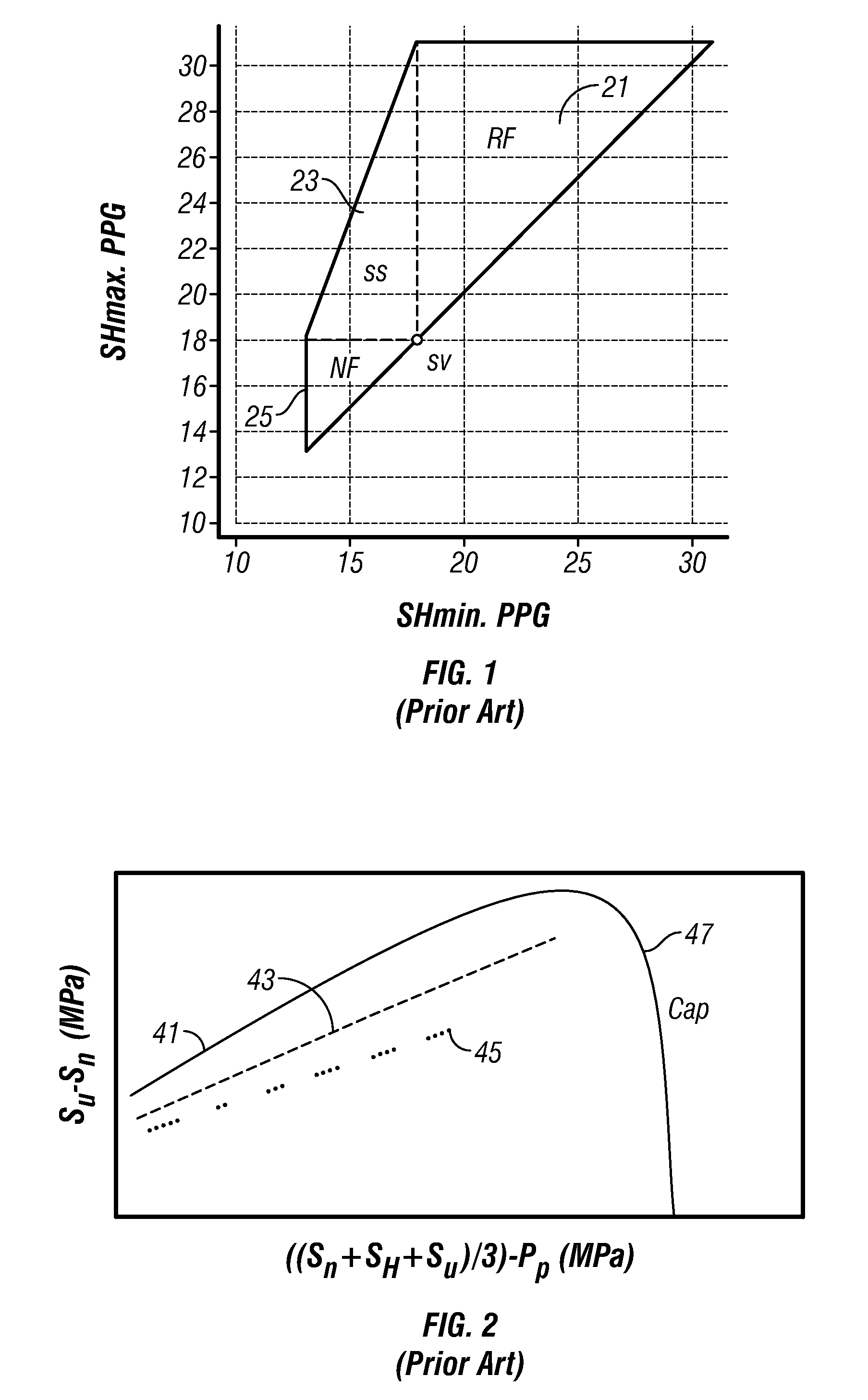Stress and pore pressure limits using a strength of materials approach
- Summary
- Abstract
- Description
- Claims
- Application Information
AI Technical Summary
Benefits of technology
Problems solved by technology
Method used
Image
Examples
Embodiment Construction
[0021] The present invention describes a method whereby the strength of the intact rock limits the stress state. In this realization of the invention, the strength model is one that is appropriate for a compacting (young, unlithified) sediment.
[0022] It is known that when small stresses are applied to a rock, the rock initially deforms elastically (that is, upon release of the stress the rock returns to its unstressed state). Past a certain applied (typically, compressive) stress, however, the rock is said to deform plastically and some of the deformation is permanent. Teng-fong Wong and others, as detailed in Schutjens, et al. (2001) described the failure or yield of rocks in compression as having two possible modes. These are strain localization leading to creation of a shear fracture, and distributed, compactive deformation leading to a permanent reduction in volume. Since the volume of the rock is composed of two elements: the solid frame and the (typically, liquid or gas-fille...
PUM
 Login to View More
Login to View More Abstract
Description
Claims
Application Information
 Login to View More
Login to View More - R&D
- Intellectual Property
- Life Sciences
- Materials
- Tech Scout
- Unparalleled Data Quality
- Higher Quality Content
- 60% Fewer Hallucinations
Browse by: Latest US Patents, China's latest patents, Technical Efficacy Thesaurus, Application Domain, Technology Topic, Popular Technical Reports.
© 2025 PatSnap. All rights reserved.Legal|Privacy policy|Modern Slavery Act Transparency Statement|Sitemap|About US| Contact US: help@patsnap.com



